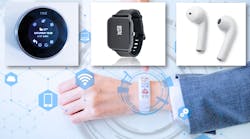All new electronic products share one design objective: low-power operation. Many of these products operate on batteries, so it makes sense to achieve the lowest possible current draw. This in turn will provide more battery life, fewer charges, and an extended operational period. For big factory IoT networks, it can save money due to a reduction in maintenance.
Wearables like earbuds, smartwatches, and medical monitors also require long battery life, as do all sorts of electric meters and field sensors. If the device spends most of its life in sleep mode, it needs special design considerations.
As it turns out, the main limiting factor is something called quiescent current (IQ). Understanding IQ and how to avoid its problems is explained here.
